Piva Lake Pearls
Embraced by mountains and enchanted by legends, Piva lake area in Northwestern Monenegro is often neglected, but well worth visiting. Piva pearls are attractive on their own and they are also a good place to make home base for exploring Durmitor and Tara.
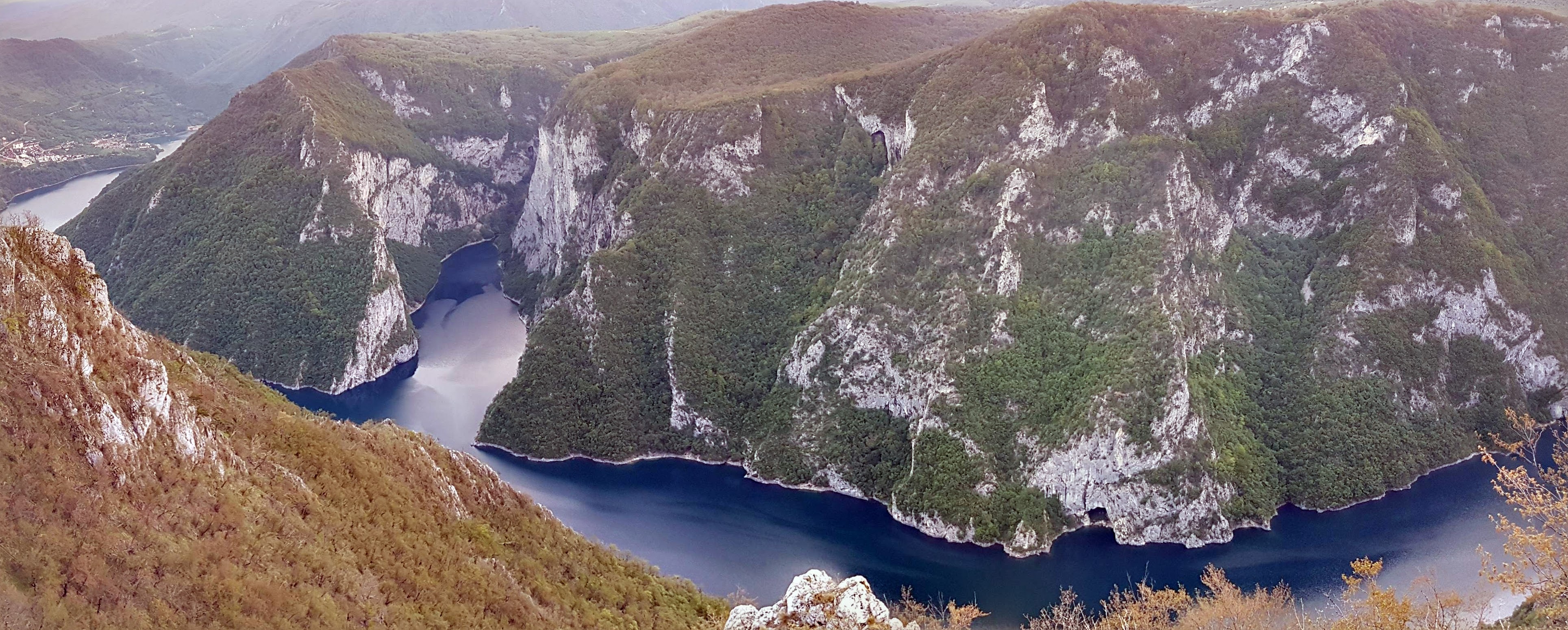
Piva Lake; Photo: Žiga Jenko
Welcome to the Silence
We escaped the crowds and distractions of civilization by taking a half an hour boat trip from Plužine to a little lakeshore camp with appealing name ‘Ajmo u tišinu’. Talking about the trend of ‘silence tourism’, here we truly experienced it. A marked trail through the woods led us to a lookout point with a beautiful view of the lake, resembling a big star.

Do You See the Star? Photo: Žiga Jenko
Later on, in the shade of oak and hornbeam trees, we enjoyed coffee and a crackling fire while our hosts prepared lunch. Trout from Piva lake, grilled together with zucchini, peppers, tomato, and onions with home-made bread and cheese – a meal to remember!
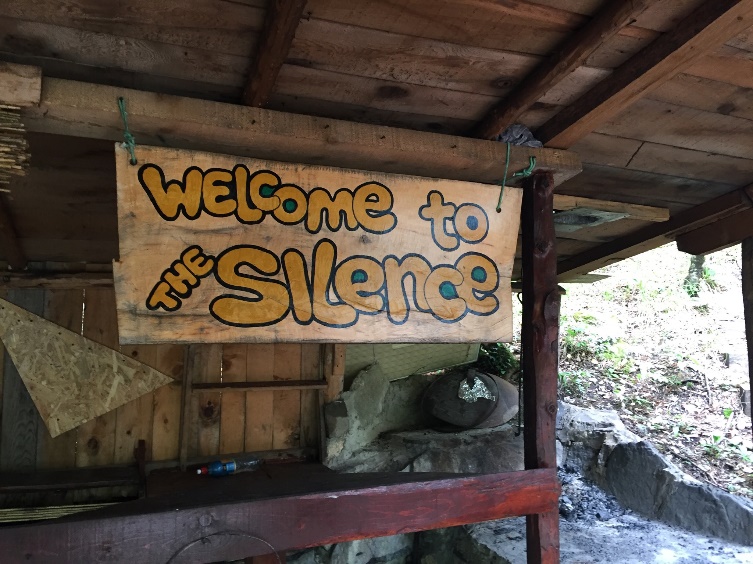
‘Welcome to the Silence’ on the Banks of Piva Lake
Quest for Stecci
Quests in the Piva mountains are inspiring and fun. They brought us to the monumental medieval tombstones, called ‘stećci’. ‘Stećci’ are a very unique peace of cultural heritage of the cross border regions of Bosnia and Herzegovina, western Montenegro, western Serbia and central and southern Croatia. They have been recently inscribed on the UNESCO list of world cultural heritage sites.
Stećci are scattered on the meadows and in the mountains of Piva and often it seems as if they are a forgotten peace of human creation. This is exactly what makes them even more attractive. Looking for ‘stećci’ is certainly an amazing quest on its own.
The most comprehensive registration of ‘stećci’ in Piva region has been done in late 60s and 70s of the 20th century by a Bosnian researcher Šefik Bešlagić. At that time, 35 locations with altogether 787 ‘stećci’ have been evidenced.
An overture into quest for ‘stećci’ may be a visit to the guesthouse Zvono in Plužine. Their ‘in-house designer’, Vlatko Vuković, designed a map that takes you to amazing places. Following that map is a truly entertaining quest with many surprises on the way.
The next stop may be Etno-selo Izlazak close to a beautiful necropolis in Rudinice.
Medovina, the Mead
The town of Plužine is famous for tasty medovina, the mead, and Zvono’s specialities cooked in it. Legends say that the mead used to be the drink of the Gods and was considered to be the elixir of youth and immortality, the source of spiritual power and physical strength of ancient heroes.
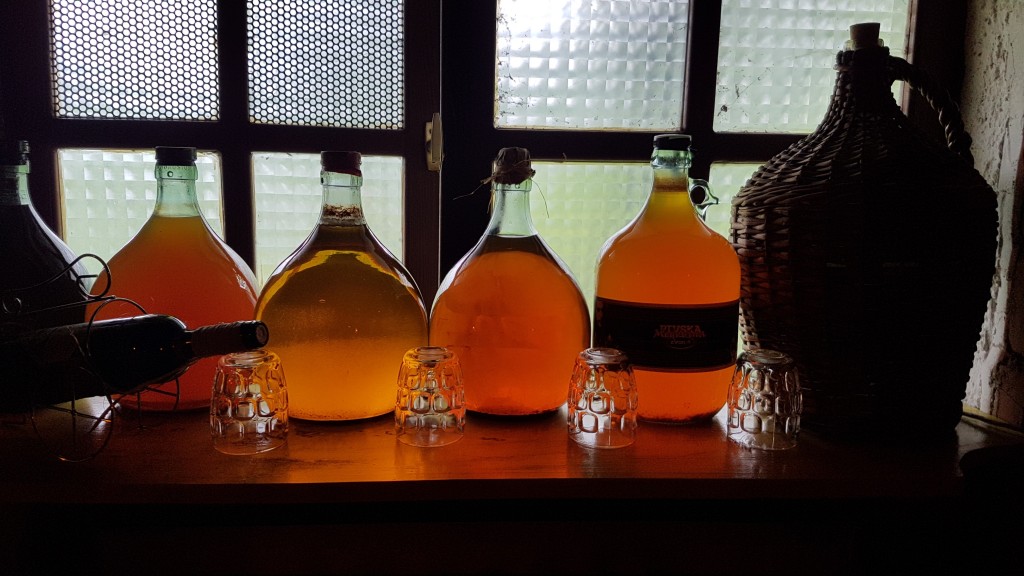
The Mead at Zvono
Piva Monastery and Secluded Villages
An early morning stop at the remarkable Piva Monastery filled us with peace and reverence. The Monastery was built in 16th century at the spring of Piva river and although it was Christian religious center, its construction was approved by the Ottoman rulers. As a result, the church in the monastery contains a fresco depicting Savatije Sokolović (the Serbian Orthodox patriarch) and Sokollu Mehmed Pasha (Grand Vizier of the Ottoman Empire), which is an unusual rarity.
In 1982, The Piva Hydro Electric Project created a vast water reservoir. The water covered the old Plužine village, two thirds of the area’s agricultural land, and several natural hot and cold springs. Only the Piva Monastery was saved, as it was moved to a new location stone by stone together with 1,500 square meters of frescoes. Preserving this monastery was a huge undertaking for ex-Yugoslav historical conservationists.
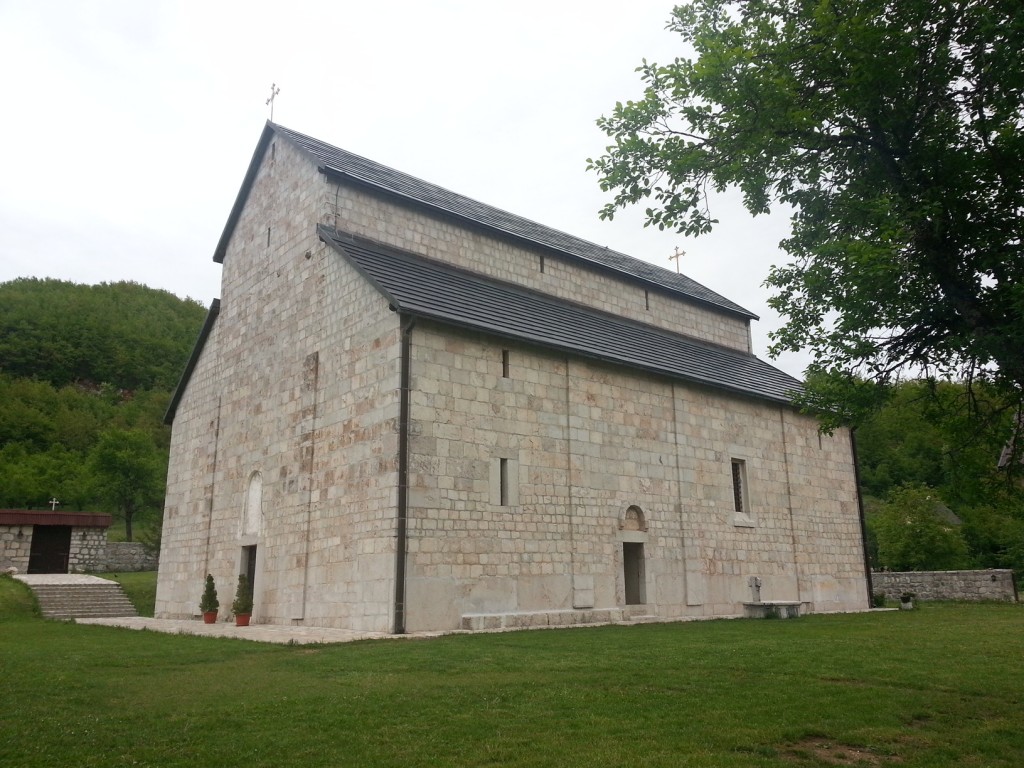
Piva Monastery
We continued our journey to the nearby farm of Željko Mitrić, the renowned honey producer, for a delicious breakfast. His farm is overgrown with fragrant flowers and embraced by aromatic meadows. His special pear orchard contains an endemic variety of pears, called “mrkaljuša.” Some of the trees are over 100 years old. The “Mrkaljuša” is a small fruit that can be eaten fresh, but is primarily used for the production of high quality brandy and “pear water” made by a process of dipping the fresh fruit into water and aging the liquid. This bitter “pear water” is believed to be very healthy.
Hiking Durmitor Ring: Thrilling Legends and Amazing Vistas
A new day in the Piva region started with preparations for our hiking escapade in the Durmitor mountains. While approaching our starting point in the mountains, our legendary guide Mirko revealed the legend of Todor whose unfortunate love for Ružica caused the jealousy of fairies and eventually gave name to the mountain Prutaš (2.393 m.a.s.l.) – the highest peak on our hiking expedition whose rock formations resemble “fairies’ hair.”
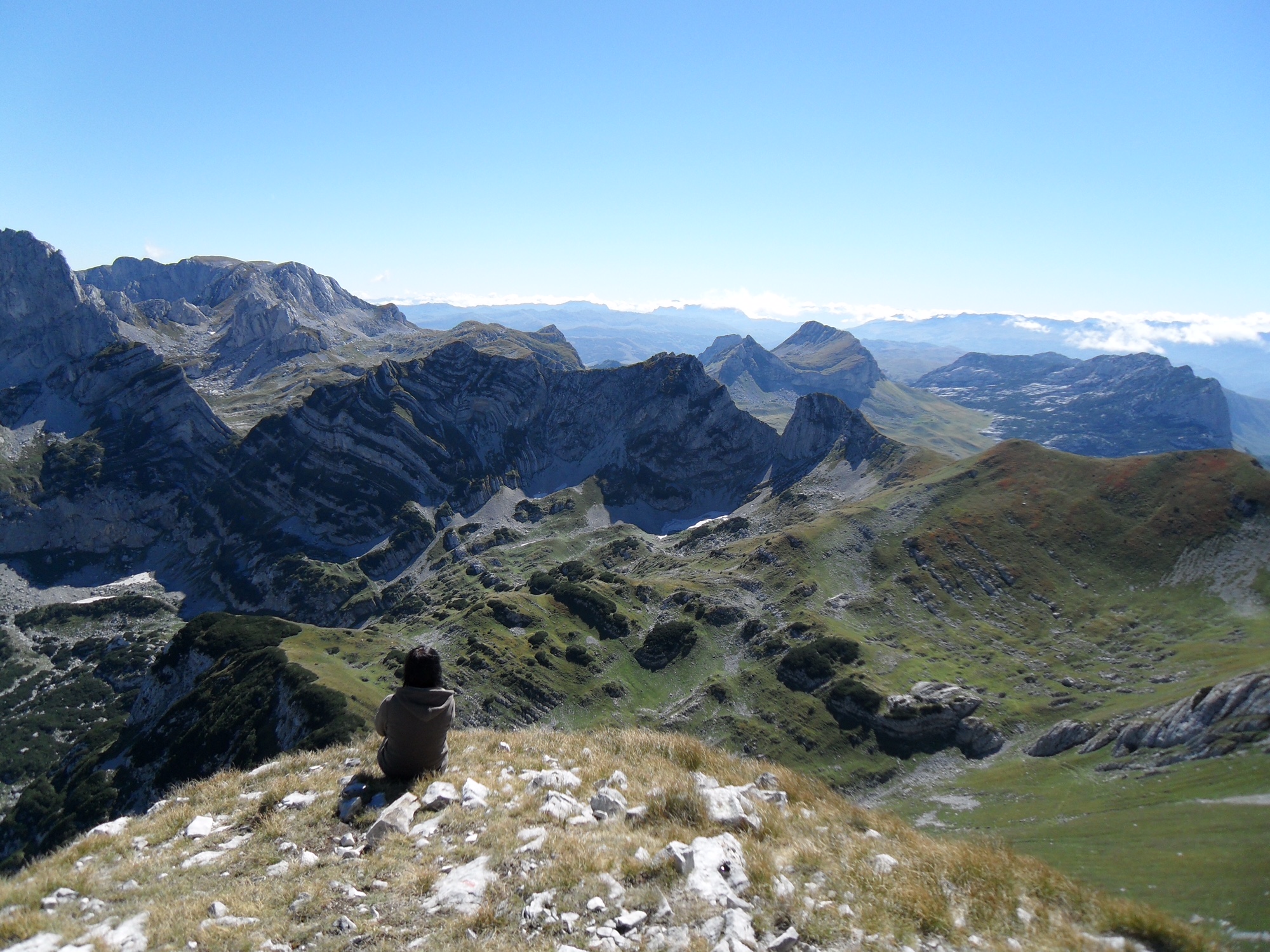
Prutaš
Experienced local mountaineering guides share deep respect for the mountain, never underestimating its power and always admiring its breath-taking beauty. Beautiful vistas filled our spirits, but we certainly deserved a good breakfast at the top of Prutaš. For most of us, breakfast at the 2.393 m doesn’t happen very often in our lives.
On our way back to the valley we crossed the border between the regions of Piva and Drobnjak and heard about another legend of a wise old lady Baba Kruna who put an end to the endless fights about where the border should be placed. She performed a ritual with stones and said that she is standing with one foot on the Piva territory and with the other one on the Drobnjak soil. On that place people put a stone wall which still exists and is called Prespa.
Our next stop was Nedajno village, a hidden gem often neglected by tourists heading towards the regional tourist centre of Žabljak. This picturesque village has maintained its traditional appearance with houses with steep roofs and small entrances. Though we visited the village several times before, we never miss a legendary local dish, called ‘cicvara’, made of wheat, corn flour and ‘skorup’ cheese. Our host’s mother used to be the most famous shepherdess and cheese maker in the Piva region.
More Pearls to be Discovered…
We heard so much about Nevidio canyon. Tucked away and hidden in inaccessible terrain, the canyon had attracted attention and curiosity for decades. Endless strange and fantastic stories used to circulate about the last unconquered canyon in Europe. Finally, in August 1965 a band of poorly equipped adventurers from the Javorak Mounteneering and Skiing Club of Niksic successfully passed through the canyon and became the first to introduce the world to the canyon’s long hidden, wild and stunning beauty.
At the end of the Komarnica river valley at an altitude of 935 m.a.s.l. begins the canyon Nevidio or Nevidjbog as is called by locals (which means “God didn’t see” in Montenegrin). As it enters the canyon, the Komarnica river suddenly disappears through a strangely carved entrance and becomes invisible to human eye. Most of the canyon is in a perpetual shadow – due to the height of its vertical cliffs, sunlight does not reach the bottom. The canyon is a gem of rugged nature that has fascinated visitors since its discovery and this is where we are headed on our next trip to Piva region.